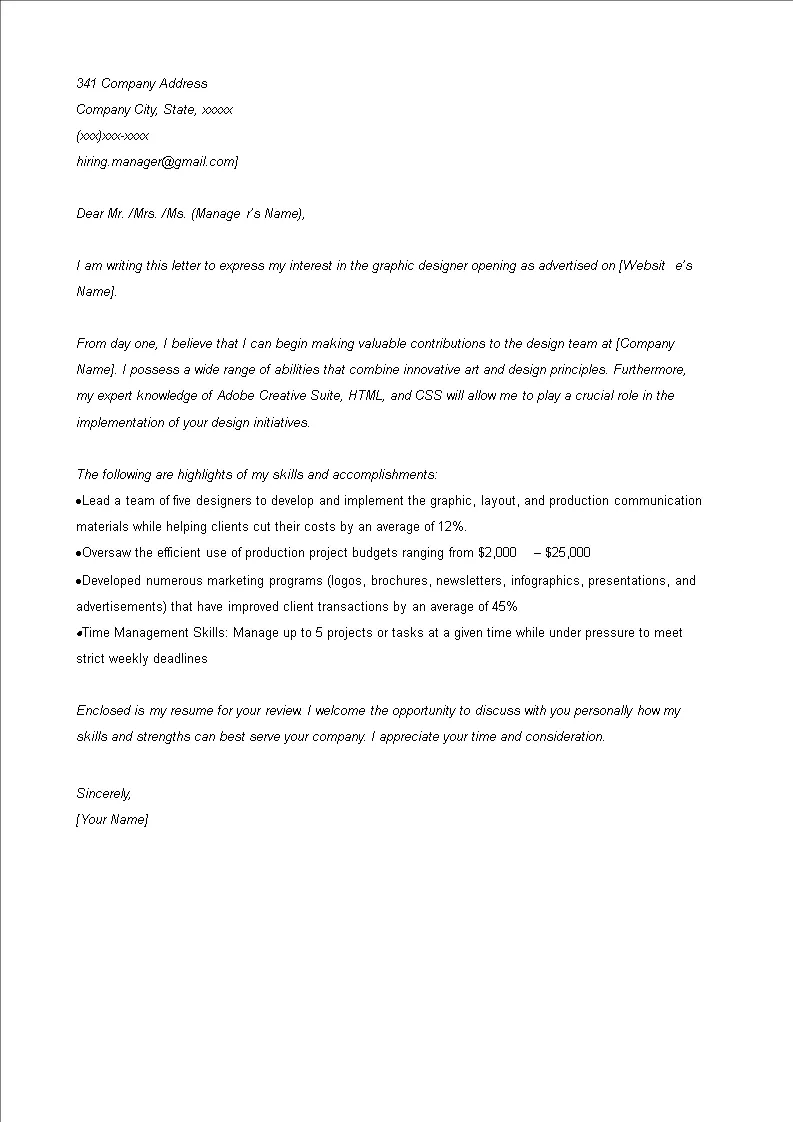Cover Letter Graphic Design Top 7 Tips
In the competitive world of graphic design, your cover letter is your first impression – a chance to showcase your creativity, skills, and personality. A well-crafted cover letter sample graphic design can be the key to landing your dream job. It’s not just a formality, but a crucial marketing tool that complements your portfolio and speaks directly to the employer’s needs. This guide provides 7 essential tips to help you create a cover letter that stands out and makes a lasting impact. From understanding its purpose to showcasing your best work, we will cover all aspects to help you land the interview.
Understanding the Purpose of a Graphic Design Cover Letter
The primary purpose of a cover letter sample graphic design is to introduce yourself and highlight your suitability for the specific graphic design role. It’s where you translate your resume into a compelling narrative, connecting your skills and experience to the employer’s requirements. Unlike a resume, which is a factual summary, your cover letter is a space for your voice to shine. It should demonstrate your understanding of the company, the role, and the industry. It’s your opportunity to make a connection, show your enthusiasm, and convey why you are the perfect fit. Remember this is the first time the company receives communication from you, make it count.
Highlighting Your Skills & Experience
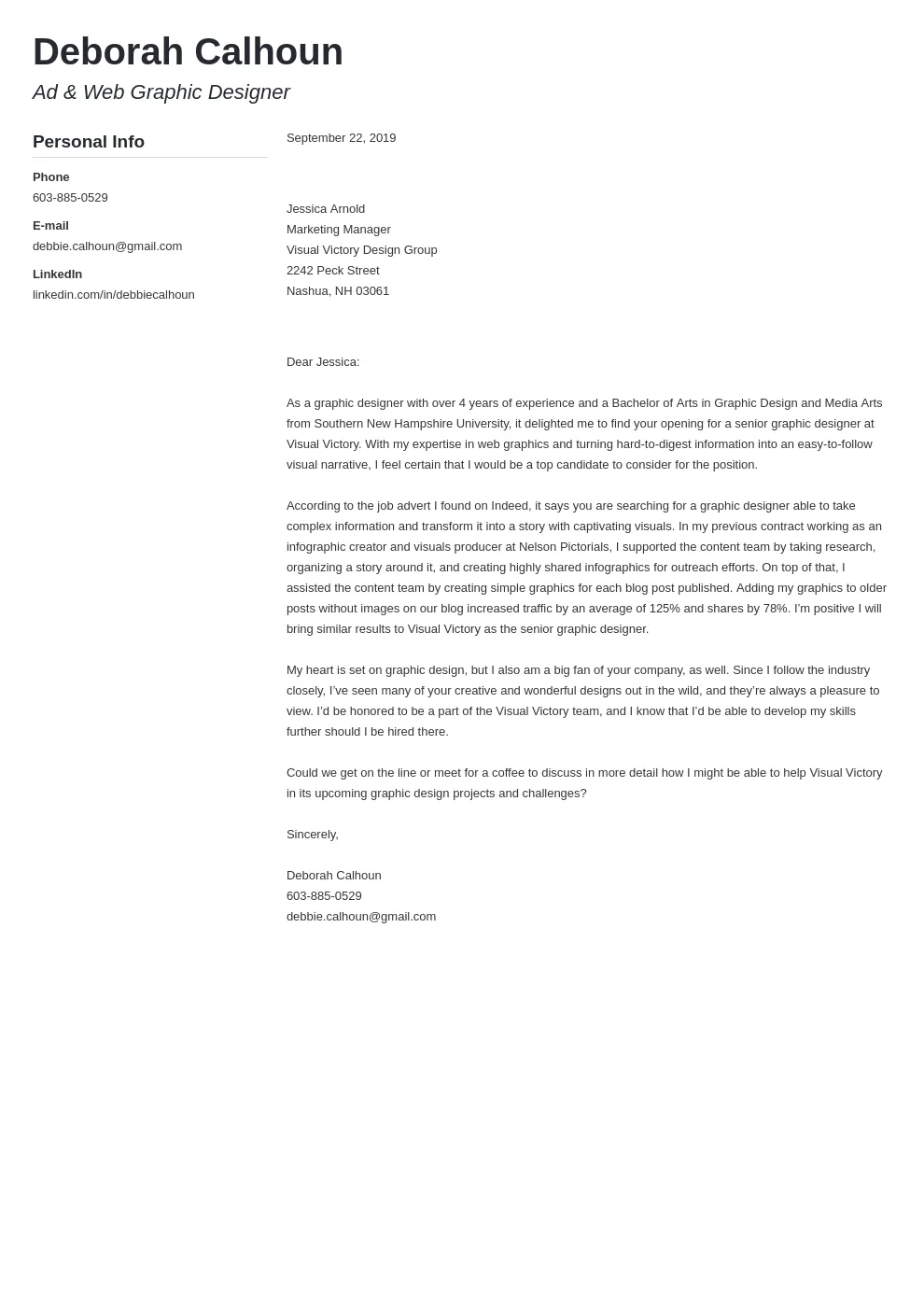
Your cover letter is where you detail your skills and experience in the context of the job you are applying for. Identify the key requirements mentioned in the job description and provide specific examples from your portfolio that demonstrate those skills. Mention the software you’re proficient in (Adobe Creative Suite, Sketch, etc.), design principles you excel at (typography, color theory, layout), and types of projects you’ve worked on (branding, web design, print materials). When possible, quantify your achievements. For instance, “Increased social media engagement by 30% through strategic design and content creation.” This provides solid evidence of your capabilities.
Tailoring Your Cover Letter to the Job
Generic cover letters are easily spotted and often discarded. Tailoring your cover letter sample graphic design to each job is crucial. Research the company, understand its brand identity, and align your language and design choices accordingly. Mention specific projects or aspects of their work that resonate with you. Explain why you are interested in this particular role at this particular company. This level of personalization shows that you’ve taken the time to understand their needs and that you are genuinely interested in the opportunity. Furthermore, customize the letter based on the type of company and the seniority of the role, always include this information on your letter.
Showcasing Your Design Portfolio
Your portfolio is your most important asset as a graphic designer. Your cover letter should serve as a gateway to it. Don’t just list your projects; describe them briefly, emphasizing your role, the challenges you overcame, and the results achieved. Include direct links to your online portfolio or attach a PDF showcasing your best work. If you’re applying for a specific type of design role, feature relevant projects prominently. Make it easy for the hiring manager to see your capabilities quickly. Keep it organized, easy to navigate, and updated with your best and most recent work. Ensure it’s easily accessible via desktop and mobile devices.
Tips for Designing an Effective Cover Letter
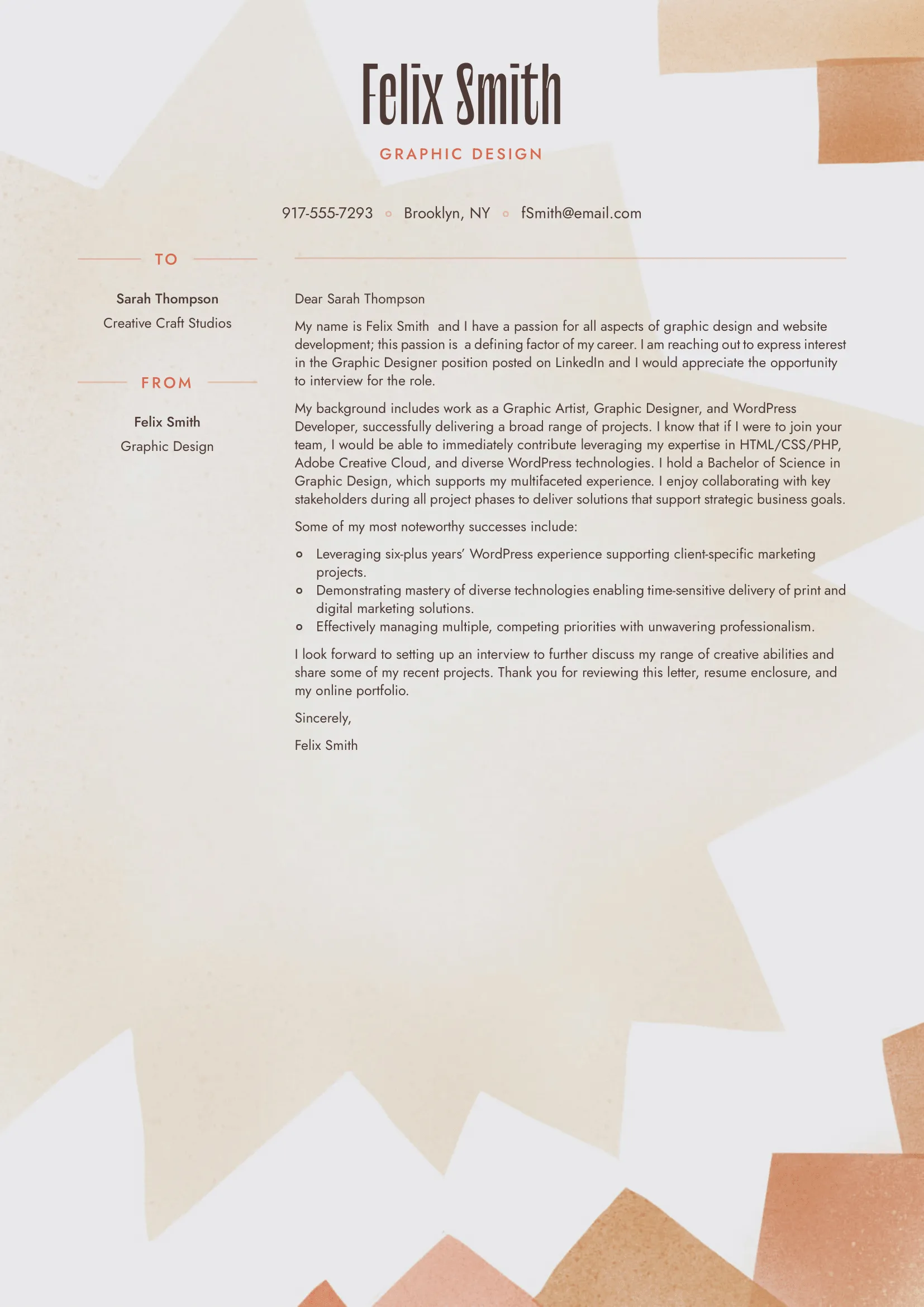
Choose a Professional Layout
The design of your cover letter should reflect your design skills and the type of role you are applying for. Keep the layout clean, easy to read, and professional. Use a simple, uncluttered design. Choose a template that complements your brand. Ensure the layout is consistent with your portfolio. Use sufficient white space to avoid a cramped appearance. If you have strong typography skills, you can create a more visually engaging layout, but always prioritize readability. Consider using a subtle, consistent design element to reinforce your brand. This helps establish your credibility.
Select the Right Fonts
Font choice is critical for both readability and conveying your personality. Choose fonts that are professional, legible, and aligned with your brand. Limit the number of fonts to two or three maximum. Pair a clear, easy-to-read font for the body text (such as Arial, Helvetica, or Open Sans) with a distinctive font for headings and your name. Ensure the fonts are web-safe, so they display correctly on any device. Consider how the font choices reflect your style and the type of design work you do. A well-chosen font enhances the overall message and visual appeal of the cover letter sample graphic design, showcasing your attention to detail.
Incorporate Visual Elements
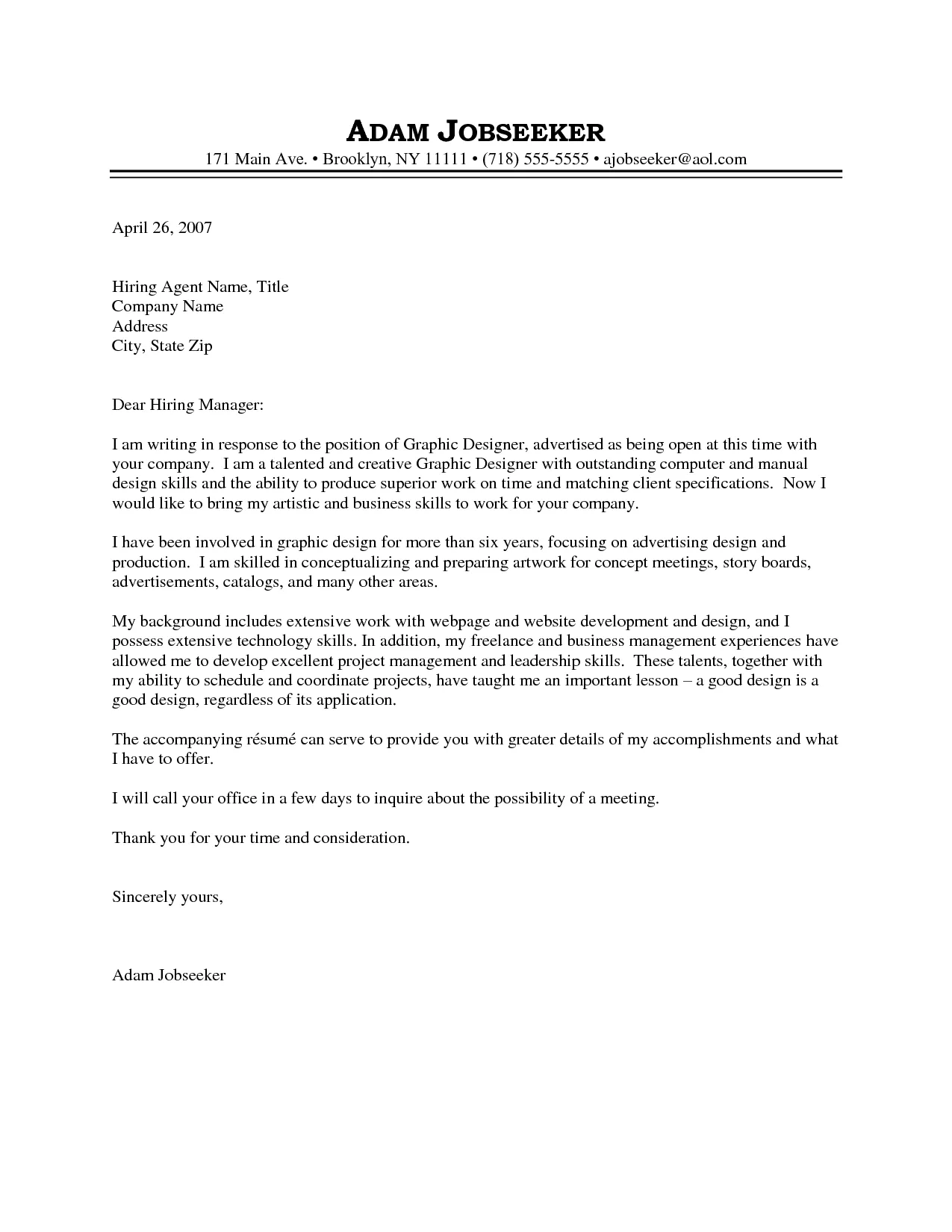
While the content is paramount, the design of your cover letter should also showcase your design skills. Use visual elements strategically. These can include your logo, a subtle background pattern, a small graphic element related to your work, or a carefully placed image. Keep it simple and ensure visual elements enhance the text rather than distract from it. The design should complement your portfolio and reinforce your brand identity. Avoid using excessive visual elements; the focus should remain on the text and your qualifications. Keep it clean and visually appealing to make it memorable.
Maintain Visual Hierarchy
Effective visual hierarchy guides the reader’s eye and communicates the most important information first. Use headings, subheadings, bold text, and bullet points to structure your cover letter sample graphic design. Ensure a clear flow from one section to the next. Use a consistent font size and style for headings, and vary them to create visual interest. Use whitespace to separate sections and make the document easy to scan. Prioritize the information you want the reader to see first, such as your key skills and achievements. Good visual hierarchy ensures the letter is easy to read and allows the hiring manager to quickly grasp your qualifications.
Best Practices for Writing Your Cover Letter
Start with a Strong Opening
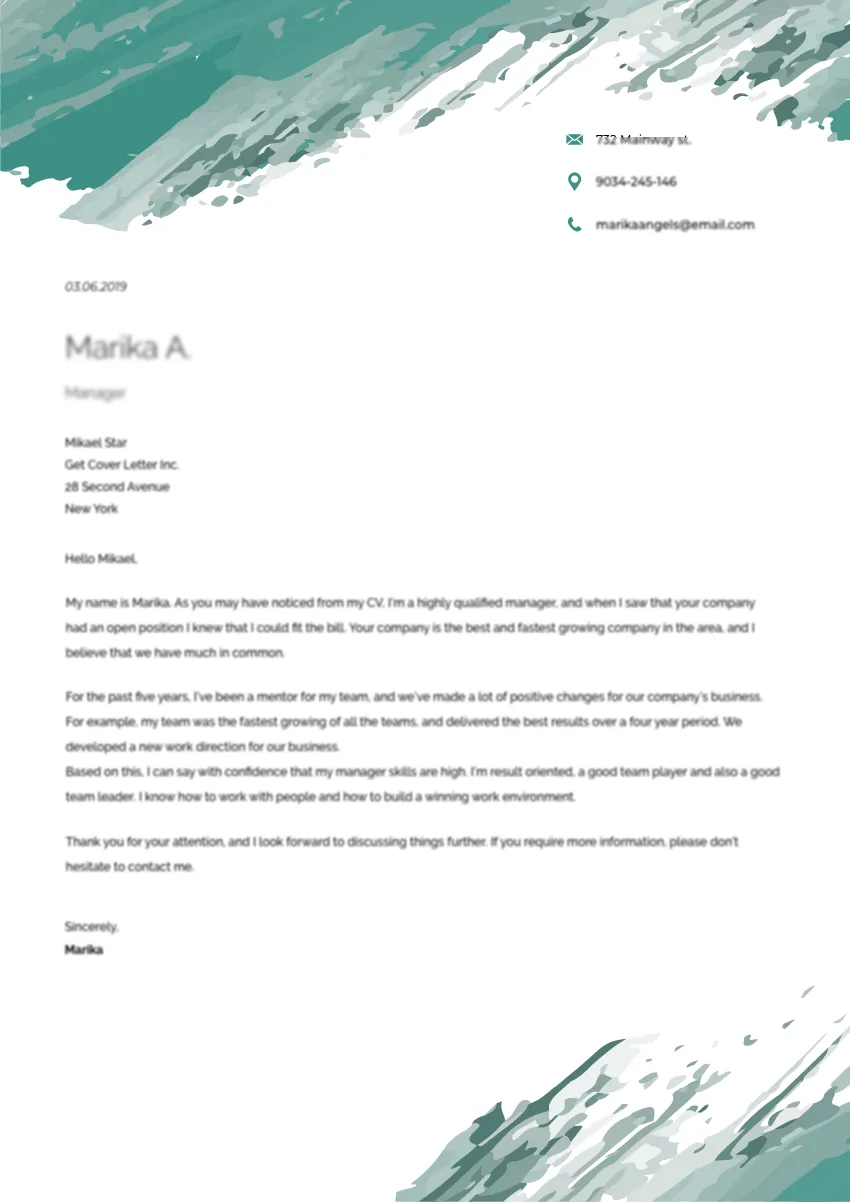
Your opening paragraph is crucial for grabbing the hiring manager’s attention. Start with a compelling hook that immediately conveys your enthusiasm for the role. Mention where you found the job listing and what specifically attracted you to the position. Briefly state why you are a good fit for the company. Avoid generic openings; personalize it. If you know the name of the hiring manager, address the letter to them. Within the first few sentences, establish a connection and demonstrate your interest. It is your first opportunity to make a positive impression and encourage them to read the rest of your letter.
Quantify Your Achievements
Instead of simply stating what you’ve done, quantify your accomplishments. Use numbers and data to demonstrate the impact of your work. For example, instead of saying “Improved website traffic,” say “Increased website traffic by 40% through redesigned user interface.” Quantifying your achievements provides concrete evidence of your skills and abilities. It shows employers that you are results-oriented. Use metrics that are relevant to the job. Whenever possible, use the STAR method (Situation, Task, Action, Result) to structure your accomplishments and highlight the impact of your actions. Show what you brought to the table.
Proofread and Edit Carefully
Typos, grammatical errors, and poorly worded sentences can undermine your credibility. Proofread your cover letter sample graphic design thoroughly before sending it. Ask someone else to review it as well; a fresh pair of eyes can catch mistakes you might miss. Pay close attention to spelling, grammar, punctuation, and sentence structure. Ensure the tone is professional and consistent throughout the letter. Check the formatting to ensure it’s consistent. Proofreading shows attention to detail and commitment to quality. Avoid using clichés and ensure the language is clear and concise. Proofreading is a crucial step to making a good impression.
The Importance of a Strong Call to Action

Contact Information and Next Steps
End your cover letter with a strong call to action. Express your enthusiasm for the opportunity and reiterate your interest in the position. Provide your contact information clearly, including your email address and phone number. State your availability for an interview and thank the hiring manager for their time and consideration. A strong call to action encourages the reader to take the next step. Make it easy for them to contact you and move forward with the hiring process. This is your final opportunity to make a positive impression and encourage action.
